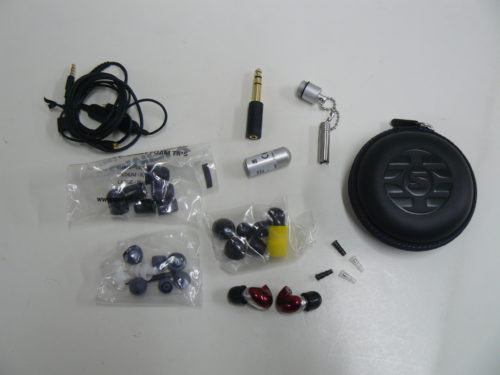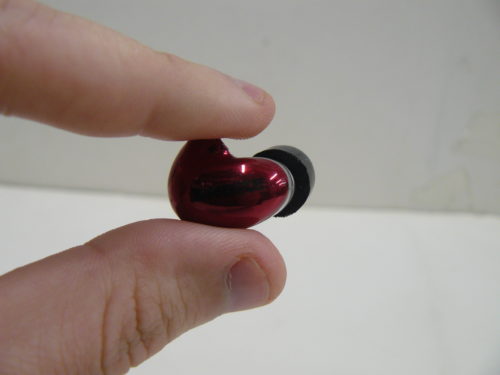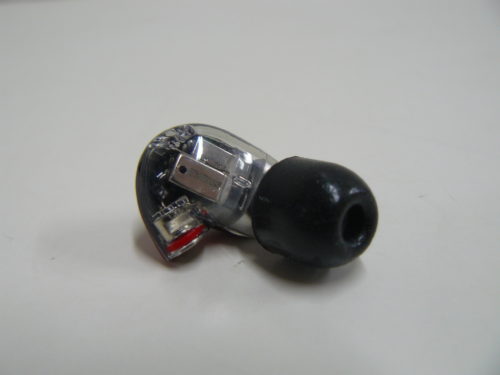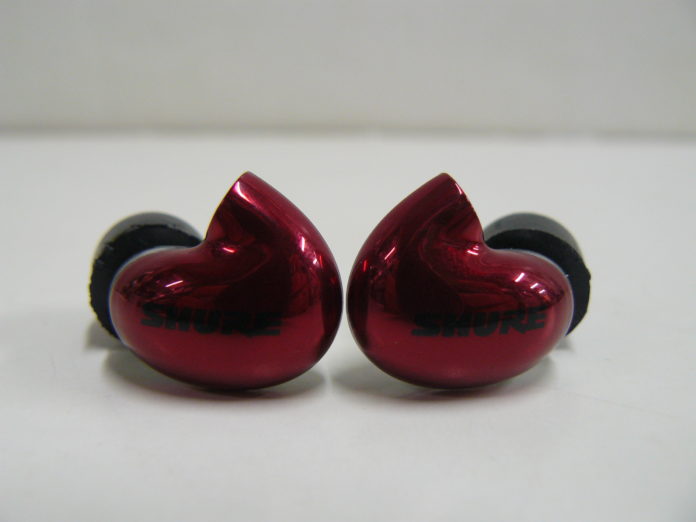Shure’s rebranded Aonic series of IEMs have been an enjoyable venture. The acclaimed manufacturer, known mainly for its studio branded products, has introduced a versatile line of earphones. So far, the Aonic 3 and 4 have presented a few different types of sound signatures that make them useful for multiple applications. The Aonic 3 shot for accuracy, while the 4 accomplished an immersive soundstage that surpassed most IEMs in the same price range. Now we have the Aonic 5, the last model in the current line that’ll set you back $499. A price point that’s still pretty inexpensive compared to some top-line IEMs. This Aonic 5 brandishes some nifty tech, so let’s what makes this Shure’s highest-end model in the series.

What You Get
You’ll receive a variety of materials when you purchase the Aonic 5. If you’re familiar with this series then the packaging will be quite familiar to you. The earphones themselves will come attached to their MMCX 3.5mm cable, complete with a built-in microphone and playback control panel. Of course, Shure also includes a quarter-inch adapter because they rock. Inside the round protective earphone case, you’ll find an assortment of items. The Aonic 5 thankfully gives you a plethora of ear tips in different sizes and styles. Three soft flex tips, three foam, and three comply, as well as a pair of triple flange and yellow foam sleeves. Lastly, you’ll find a set of attachable nozzles, neutral, bright, and warm, as well as a key that will loosen and tighten them into place.

Look and Feel
The style of the Aonic 5 is more in line with the 4, and other groups of Shure IEMs, such as the SE215 and 846. The housing is made using ABS plastic with TPE strain relief. Half of the shell is completely clear, revealing the inner mechanisms of the driver system. The front faceplate comes in three solid variations, black, red, and clear, where the entire housing becomes see-through. Out of all the other Aonic branded IEMs, the 5 sports the most complete look, with its sleek coloration and translucent combo.
As far as the fit goes, Shure’s focus on versatility in its inclusion of multiple ear tip styles really helps the ergonomic structure of this earphone. I prefer the foam tips with the Aonic 5, as I feel they keep the housing more stable in my ear. However, you might prefer the soft flex or triple flange tips, and that’s what makes the Aonic 5 so adaptable for many listeners. I’m still not a huge fan of the stock cable. The length is restrictive, and even though I appreciate the built-in mic and control surface, there are better options for cables out there.

Design
Inside of the Aonic 5 is three high-definition balanced armatures. Two units act as woofers, delivering lows and mids, while the third unit acts as a tweeter, producing enhanced highs. Along with that is Shure’s sound-isolating technology, which blocks 37dB of noise, eliminating outside ambiances without resorting to noise-cancelation. Now it’s time to talk about the Aonic 5’s most unique feature, the attachable nozzles. The earphones come with the “neutral” nozzles already attached. You can remove them using the included key that’s used to unscrew the small nozzle pieces. Then you can crew in either the “warm” nozzles(black) or the “bright” nozzles(clear). These attachments will change key parts of the sound signature, and help personalize the timbre to suit your taste.

Output
Adding to the versatility of the Aonic 5 is a low impedance of 36 Ohms. Perfect for satisfying output on laptops and smartphones. I do prefer a DAC with these earphones, as they help to even out some of the powerful signal information the Aonic 5 will produce. If you’re using a laptop or smartphone, be careful and watch your input gain.

Soundstage
One of the highlights of this series is the impeccable soundstage these IEMs produce. Big imaging and depth are then game the Aonic 5 plays, as left/right stereo width lies toward the accurate side. The stage never feels like its open or substantial width, but there’s enough focus here to be respectable. The spatial imaging does most of the job here, creating engaging displays of sound reproduction.
Everything on the Aonic 5 is presented with a large-bodied sound that faired perfectly with my punk and emo jams. The track “A Jack With One Eye” by Texas Is the Reason transitions between the mellow main melody, and the explosive chorus beautifully on the Aonic 5, with the crunchy distorted guitars, blasting forward and engulfing the stage with their power. Of course, the use of different nozzles changes the sound signature, but I’d say the stage remains mostly the same no matter what attachment you use. The brighter option does feel like it increases spatiality somewhat, but it’s more of an effect of a strong top-end than anything.
Low End
There’s a throughline trend going on with the Aonic 5. It wants to push the most neutral timbre possible, as to leave room for the different nozzles to do their work. While the sound quality does change, the bass is mostly left to its neutrality. However, I don’t see this as a negative in any regard. The flatter response is useful in a variety of professional applications, such as reference monitoring.
While using the Aonic 5 with the iFi Zen DAC, and turning on true bass mode, the lows gain a needed amount of weight that’s missing from the more flat response, and when implementing the warm nozzles, the timbre of the bass changes drastically. While the tonality does warm-up, the sound just appears way more growly than before. This greatly increases the enjoyability of some dark synth or emocore ballads. Whether you want that flat, neutral bass timbre, or a punchier, booming feel, the Aonic 5 finds a way to do both.
Mids
A different story is told in the mids, as no matter what nozzle you use, the mids remain this clean, consistently balanced timbre. When applying the standard neutral nozzles, the mids tend to come out more noticeably forward. This creates a fuller body for vocal clarity, as well as a broader presentation of instruments and effects. On the track “The Watchmen” by Fields of the Nephilim, The clean guitar melodies and background sound effects blend exceptionally well with the more guttural vocal performance and the Aonic 5 balances those elements incredibly well.
Highs
Slightly recessed on the warm nozzle, detailed and sparkly on the neutral, and an acquired taste on the bright nozzle. Although I am a fan of some brighter textures, the Aonic 5 really emphasizes them, and that may put some people off. The big imaging works on the low and mid bands, but the size of the highs on both the neutral and bright setting is very heavy.
This worked for my engagement with more shoegaze style tracks, like “Machine Gun” from Slowdive. In this track the female vocals sounded heavenly, helped by the inclusion of noticeable reverb tails and reflections. You could also hear details like acoustic guitar strums that softly clicked with a sparkly timbre that added to the ethereal qualities of the track. However, some details can be considered harsh for some, and at points, you could feel like the track was just reaching the threshold. Otherwise, the top-end here adds a lot, and maybe too much at times, but warming up the signature with the nozzle smooths out those frequencies for a more friendly response.
Summary
I enjoyed the Aonic’s sense of personalization and versatility. Shure has shown that one earphone can try to do it all, and for the most part, the Aonic 5 succeeded. However, accessibility can be an issue, and this IEM can be a hard sell for some. I found that the more you put into the Aonic 5, the more it delivers. Some may just need an IEM that has a flat, neutral response for monitoring, and the Aonic 5 does that very well, but for a more textured, satisfying sound signature, it definitely benefits from outboard gear.
Pros and Cons
Pros: Fit, customization, soundstage,
Cons: Brightness
| Transducer Type | Triple balanced-armature drivers |
| Sensitivity | 119 dB SPL/MW @1kHz |
| Impedance | 36 Ohms @1kHz |
| Frequency Range | 18Hz –19kHz |
| Input Connector | MMCX Connectors |
| Weight | 24.5g (.8oz) |
The Shure Aoinc 5 is available at Audio 46.
MAJORHIFI may get a commission from retail offers.
MAJORHIFI may receive commissions from retail offers.








